
# 3660 FDC - 2002 37c Duke Kahanamoku
37¢ Duke Kahanamoku
City: Honolulu, HI
Quantity: 62,800,000
Printed by: Avery Dennison
Printing Method: Photogravure
Perforations: Serpentine Die Cut 11 ½ x 11 ¾
Color: Multicolored
Happy Birthday, Duke Kahanamoku

Duke Paoa Kahinu Mokoe Hulikohola Kahanamoku (also known as “The Duke” and “The Big Kahuna”) was born on August 24, 1890, in Haleê ä kala Honolulu, Kingdom of Hawaii. His family was related to the Kamehamehas, who’d led Hawaii for several years – his family was considered lower-ranking nobles.
When he was three, his family moved to Kã â lia, Waikiki to be closer to his extended family. He grew up with five brothers, three sisters, and 31 cousins. Duke attended school there but didn’t graduate, instead leaving school to help support his family.
Duke spent much of his spare time on the beach, surfing and swimming. Surfing was an ancient Polynesian sport that had declined in most of the Pacific by 1900. “He’enalu” (wave-sliding) was still practiced in Waikiki where Duke grew up though. He was a strong swimmer. In fact, in August 1911, he set a new 100-yard freestyle world record of 55.4 seconds, 4.6 seconds better than the existing world record. Duke also broke the 200-yard and 50-yard records, but the Amateur Athletic Union didn’t believe him and didn’t give him credit for these accomplishments for many years.
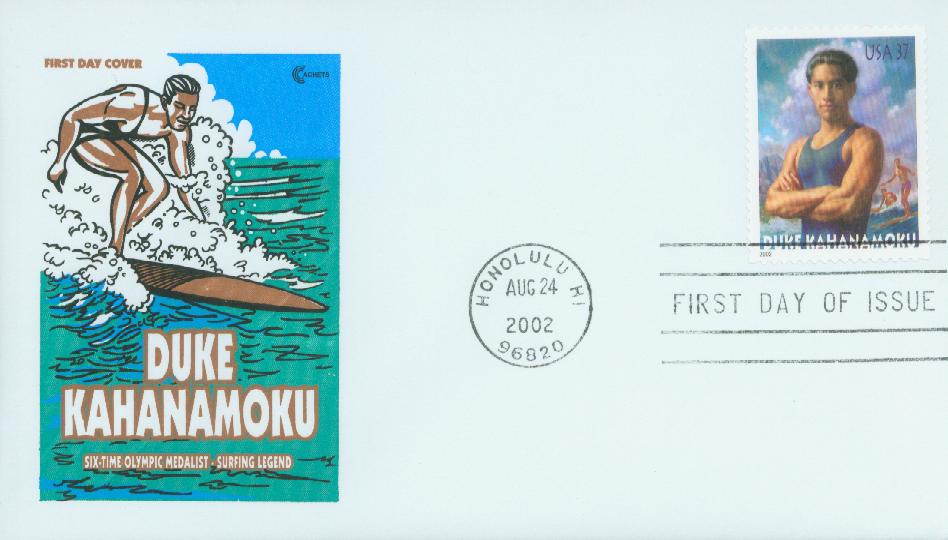
In spite of this snub, Duke easily qualified for the US Olympic swimming team in 1912, the first of five trips he’d make to the Olympics. In his first Olympics, in 1912, he almost slept through the 100-meter freestyle. He persuaded officials to delay the race long enough for him to put a swimsuit on, then went on to break the Olympic record and to win the gold medal.
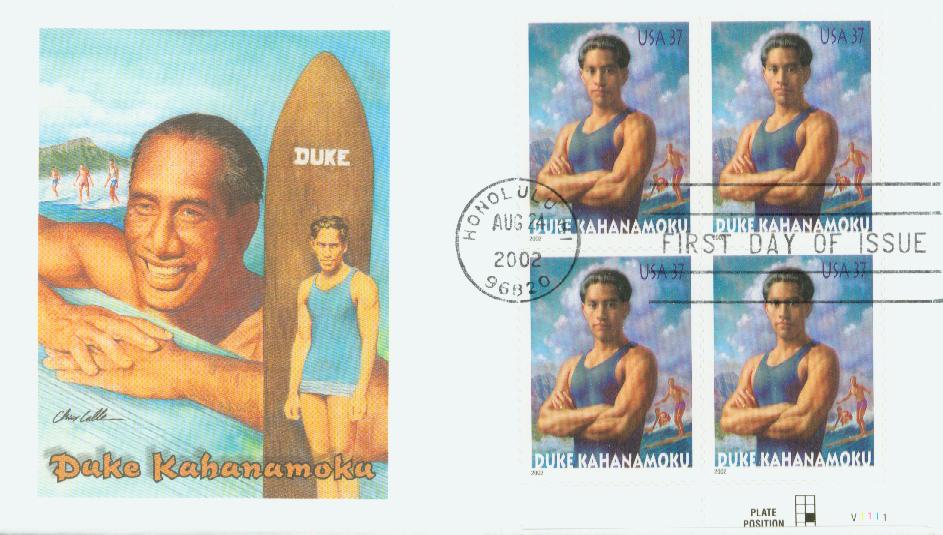
Duke won two more gold medals at Antwerp in the 1920 games. He and his brother Samuel stood together on the podium in Paris in 1924, where Duke won the silver and Samuel won the bronze in the 100-meter freestyle event. Duke was also on the US water polo team in the 1932 Olympics but did not participate in a game.
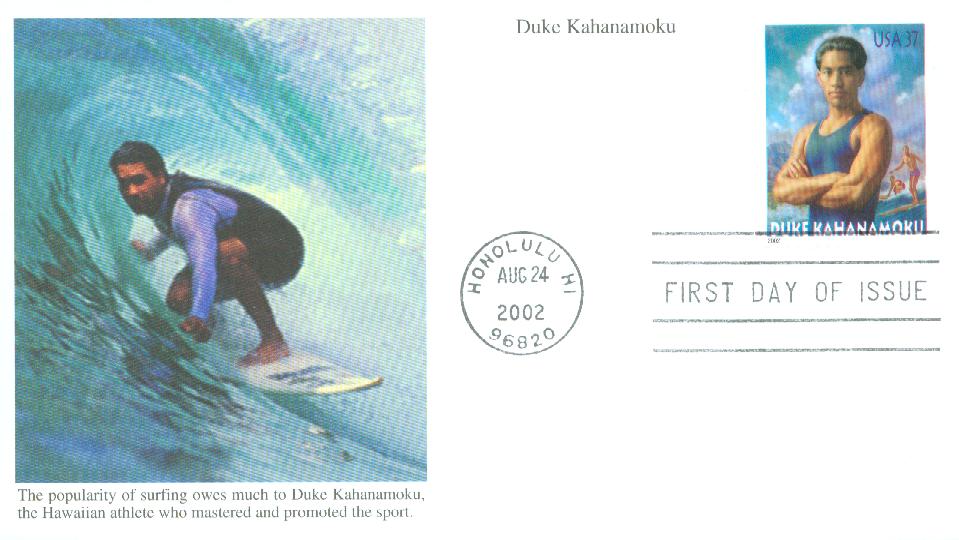
In between his Olympic appearances and after retiring from them, Duke traveled the world for swimming exhibitions. While on these trips he also put on surfing exhibitions, which helped to popularize the sport. Previously, it wasn’t well known outside of Hawaii. Duke brought surfing to California in 1912 and lived there for several years. During his time in California, Duke worked as a background actor and character actor in several Hollywood films.
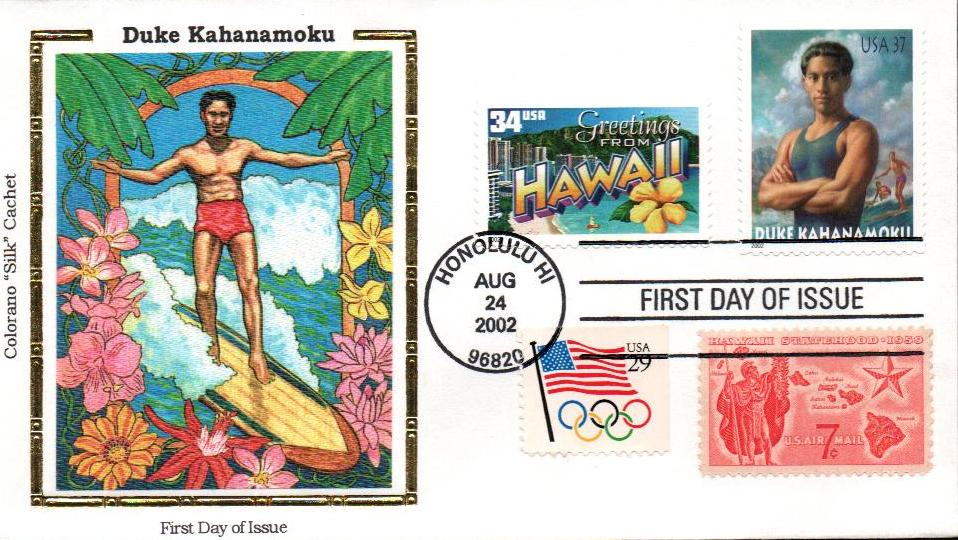
Also, while living in California, Duke helped save eight fishermen from drowning in 1925. Their boat had capsized in heavy surf and Duke used his surfboard to quickly ferry the men to shore and return to the ship to rescue more men. The local police chief said it was “the most superhuman surfboard rescue act the world has ever seen.” That also led American lifeguards to start using surfboards in their rescues.
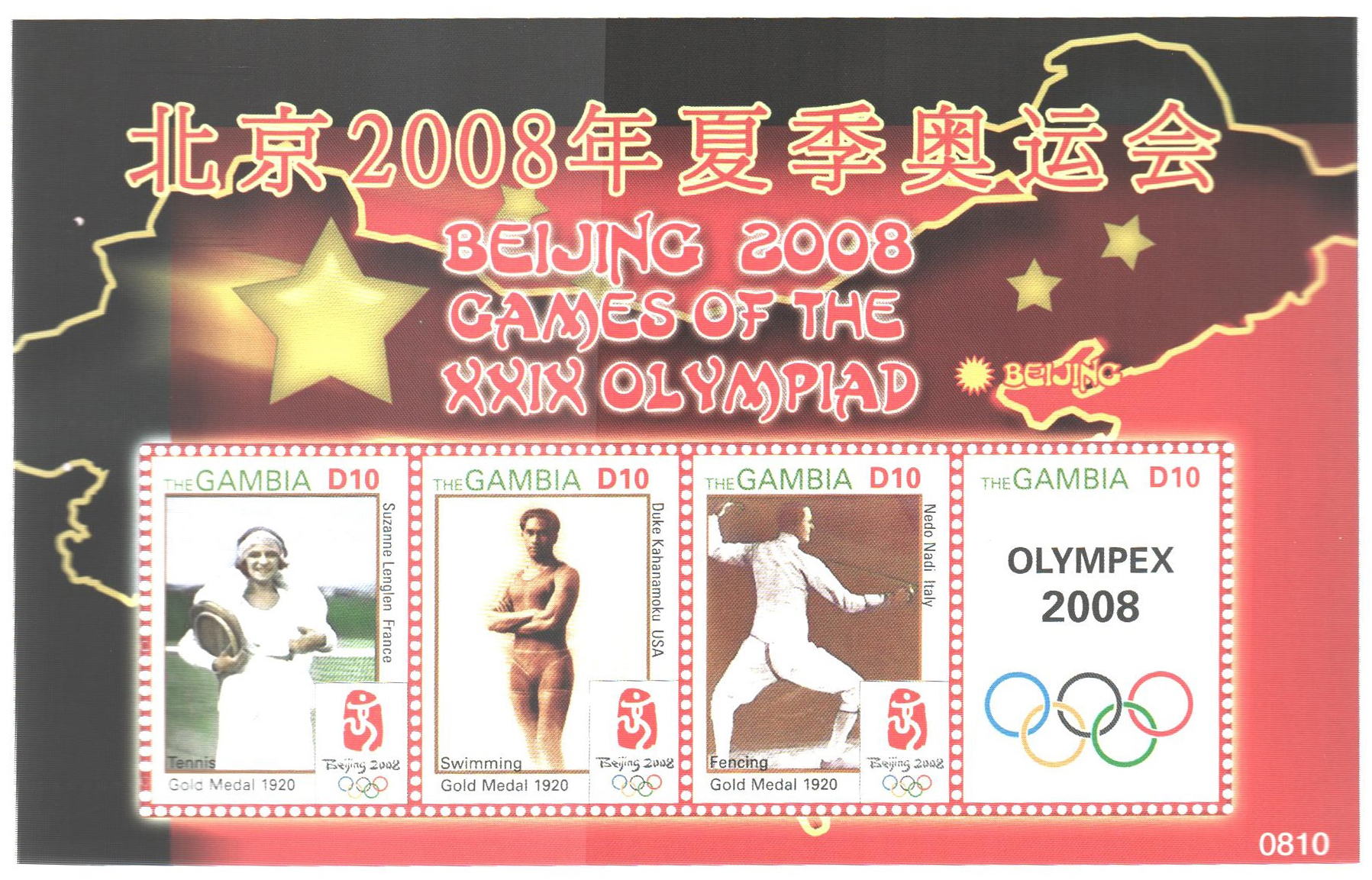
Duke returned to Hawaii and from 1932 to 1961 served as sheriff of Honolulu. He was the first person inducted into the Swimming and Surfing Halls of Fame. Duke has also been inducted into the US Olympic Hall of Fame and the Duke Kahanamoku Invitational Surfing Championships were named in his honor.
Duke died on January 22, 1968, of a heart attack. His ashes were scattered into the ocean.
Click here to see Duke’s accomplishments honored on This is Your Life.
37¢ Duke Kahanamoku
City: Honolulu, HI
Quantity: 62,800,000
Printed by: Avery Dennison
Printing Method: Photogravure
Perforations: Serpentine Die Cut 11 ½ x 11 ¾
Color: Multicolored
Happy Birthday, Duke Kahanamoku

Duke Paoa Kahinu Mokoe Hulikohola Kahanamoku (also known as “The Duke” and “The Big Kahuna”) was born on August 24, 1890, in Haleê ä kala Honolulu, Kingdom of Hawaii. His family was related to the Kamehamehas, who’d led Hawaii for several years – his family was considered lower-ranking nobles.
When he was three, his family moved to Kã â lia, Waikiki to be closer to his extended family. He grew up with five brothers, three sisters, and 31 cousins. Duke attended school there but didn’t graduate, instead leaving school to help support his family.
Duke spent much of his spare time on the beach, surfing and swimming. Surfing was an ancient Polynesian sport that had declined in most of the Pacific by 1900. “He’enalu” (wave-sliding) was still practiced in Waikiki where Duke grew up though. He was a strong swimmer. In fact, in August 1911, he set a new 100-yard freestyle world record of 55.4 seconds, 4.6 seconds better than the existing world record. Duke also broke the 200-yard and 50-yard records, but the Amateur Athletic Union didn’t believe him and didn’t give him credit for these accomplishments for many years.

In spite of this snub, Duke easily qualified for the US Olympic swimming team in 1912, the first of five trips he’d make to the Olympics. In his first Olympics, in 1912, he almost slept through the 100-meter freestyle. He persuaded officials to delay the race long enough for him to put a swimsuit on, then went on to break the Olympic record and to win the gold medal.

Duke won two more gold medals at Antwerp in the 1920 games. He and his brother Samuel stood together on the podium in Paris in 1924, where Duke won the silver and Samuel won the bronze in the 100-meter freestyle event. Duke was also on the US water polo team in the 1932 Olympics but did not participate in a game.

In between his Olympic appearances and after retiring from them, Duke traveled the world for swimming exhibitions. While on these trips he also put on surfing exhibitions, which helped to popularize the sport. Previously, it wasn’t well known outside of Hawaii. Duke brought surfing to California in 1912 and lived there for several years. During his time in California, Duke worked as a background actor and character actor in several Hollywood films.

Also, while living in California, Duke helped save eight fishermen from drowning in 1925. Their boat had capsized in heavy surf and Duke used his surfboard to quickly ferry the men to shore and return to the ship to rescue more men. The local police chief said it was “the most superhuman surfboard rescue act the world has ever seen.” That also led American lifeguards to start using surfboards in their rescues.

Duke returned to Hawaii and from 1932 to 1961 served as sheriff of Honolulu. He was the first person inducted into the Swimming and Surfing Halls of Fame. Duke has also been inducted into the US Olympic Hall of Fame and the Duke Kahanamoku Invitational Surfing Championships were named in his honor.
Duke died on January 22, 1968, of a heart attack. His ashes were scattered into the ocean.
Click here to see Duke’s accomplishments honored on This is Your Life.







